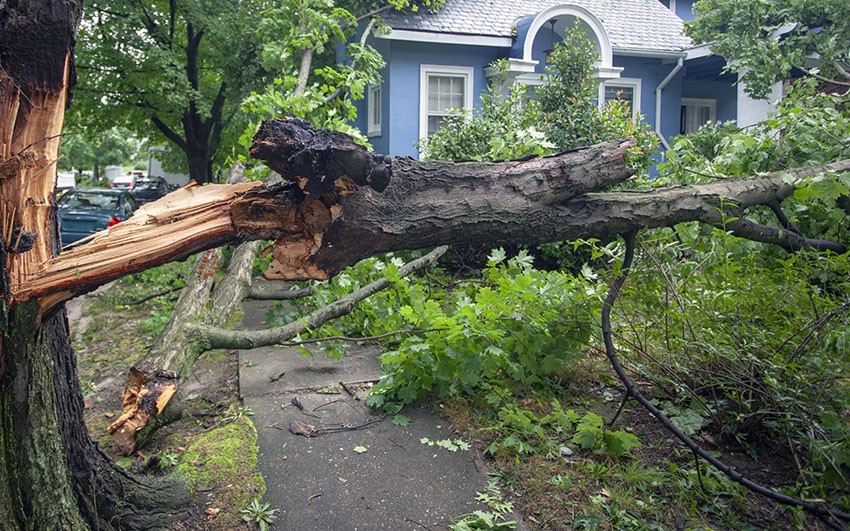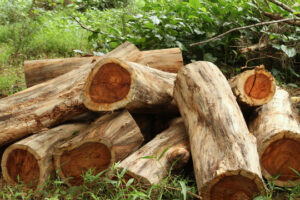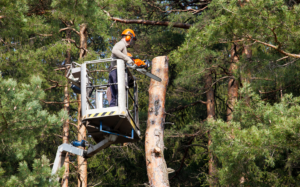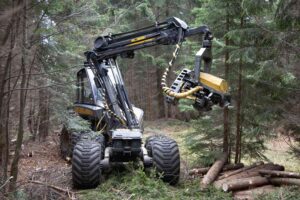When a tree falls, it can cause damage to properties, block roads, or even pose safety hazards. In the U.S., the responsibility for dealing with a fallen tree varies depending on where the tree was located before it fell, where it fell, and sometimes the reason it fell. Understanding who is liable can help you handle the situation effectively and possibly recoup losses if damage occurs.

Typically, the party responsible for tree removal is the owner of the property where the tree fell. This means that if a tree from one property falls onto another, the owner of the property where the tree has landed is usually the one who must handle its removal. This principle applies regardless of where the tree originally stood. For example, if a tree rooted in your neighbor’s yard falls onto your property, you would generally be responsible for cleaning up and disposing of the tree. Exceptions to this rule can occur in cases where the tree’s fall is due to negligence, such as lack of proper maintenance or failure to remove a diseased tree, which might shift responsibility to the tree’s original owner.
Understanding Responsibility: Homeowner vs. Government vs. Neighbor
1. When a Tree Falls on Your Property
The responsibility for removing a fallen tree typically depends on the ownership of the tree and where it falls. Here’s a simple guide:
Table: Responsibility for Tree Removal Based on Location and Ownership
| Ownership of Tree | Falls on Your Property | Falls on Neighbor’s Property | Falls on Public Land |
|---|---|---|---|
| Your Tree | Your responsibility | Your responsibility | Report to government |
| Neighbor’s Tree | Neighbor’s responsibility if tree was unhealthy or poorly maintained; otherwise, your responsibility | Neighbor’s responsibility | Report to government |
| Public Tree | Report to government | Report to government | Government’s responsibility |
2. When a Tree Falls from Public Property
Trees that fall from public property onto private property are generally the responsibility of the government agency managing that land. This could be a city, county, or federal agency, depending on the location of the tree. For example, if a tree from a city park falls into your yard, you should contact city services for removal.
3. When a Tree Falls from Your Property onto a Neighbor’s Property
If your tree falls onto your neighbor’s property, you are only responsible if the fall was due to negligence, such as failing to maintain a diseased or dying tree. If the tree was healthy and fell due to natural events like a storm, your neighbor may need to file a claim with their homeowner’s insurance.
4. When a Neighbor’s Tree Falls on Your Property
If a neighbor’s tree falls onto your property, they could be responsible if the tree was unhealthy or not properly maintained. You should document the condition of the tree and may need to prove negligence to have the neighbor or their insurance pay for damages and removal.
Legal Considerations
Tree law varies from state to state, but there are some common principles. Typically, a tree that falls due to natural reasons (like weather) is considered an act of God, and the owner is not liable for damages caused to another’s property. However, the tree owner can be held liable if the fall was due to negligence.
Insurance Implications
Homeowner’s Insurance
Homeowner’s insurance generally covers damages to your house and other insured structures on the property caused by a fallen tree. You may also be covered for the cost of removing the tree, depending on your policy specifics.
Liability Insurance
If your tree damages your neighbor’s property and you are found liable, your homeowner’s liability insurance might cover the damages. It’s important to check the details of your insurance policy to understand the coverage limits and exclusions.
Practical Steps After a Tree Falls
- Document the Scene: Take photos of the fallen tree, the damage, and its prior location.
- Contact Your Insurance: Notify your insurer about the incident, especially if there is significant property damage.
- Hire Professionals: Consider hiring a professional tree removal service, especially if the tree is large or poses a danger.
- Notify Appropriate Parties: If the tree fell from or onto neighboring property, communicate with your neighbor. If it fell from public property, contact the relevant government agency.
Conclusion
Dealing with a fallen tree can be a complex issue, involving understanding property rights, local laws, and insurance policies. Knowing who is responsible for fallen tree removal and any associated damages is crucial for resolving the situation efficiently and legally. Always consider professional legal and insurance advice to handle specific situations appropriately.


